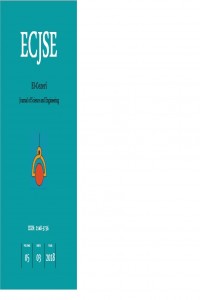Abstract
The stepped spillways
consist of concrete steps on the spillway discharge channel to assist in the
dissipation of the kinetic energy of the water flow. This structure reduces
size or eliminates the need for an additional energy dissipator on downstream
toe. In this study, an investigation of
nappe flow regime has been carried out to study the influence of operating
conditions on the hydrodynamics and mass transfer characteristics on the steps
of the spillway by using two-fluid computational multiphase fluid dynamics
(CMFD) modeling. The numerical work was performed by means of the program ANSYS
CFX 11.0 software. The CMFD results are validated with experimental
observation. Thus, the numerical performance of nappe flow is analyzed.
References
- [1] Chanson H. “The Hydraulics of Stepped Chutes and Spillways”. Balkema, Lisse, the Netherlands, 2002.
- [2] Chen, Q., Dai, G. and Liu, H. “Volume of fluid model for turbulence numerical simulation of stepped spillway overflow”. Journal of Hydraulic Engineering, 2002, 128 (7), 683–688.
- [3] Boes, R.M. & Hager, W.H. “Hydraulic Design of Stepped Spillways”. Journal of Hydraulic Engineering, 2003,129, 9, 671-679.
- [4] Ferziger, J. H., Peric, M. “Computational methods for fluid Dynamics”, Springer-Verlag, Berlin, Heidelberg, 1996.[5] ANSYS CFX Solver Theory Guide, 2011.[6] Chanel, P. G., and Doering, J. C. “Assessment of spillway modeling using computational fluid dynamics.” Canadian Journal of Civil Engineering, 2008, 35(12), 1481–1485.
- [7] Aydin, M. C., and Ozturk, M. “Verification and validation of a computational fluid dynamics (CFD) model for air entrainment at spillway aerators.” Canadian Journal of Civil Engineering, 2009, 36(5), 826–836.
- [8] Chinnarasri, C., Kositgittiwong, D., and Julien, P. Y. “Model of flow over spillways by 30 computational fluid dynamics.” Proceedings of the Institution of Civil Engineers - WaterManagement, 2014, 167(3), 164–175.
- [9] Dursun, O. F., and Ozturk, M. “Determination of flow characteristics of stepped spillways.” Proceedings of the Institution of Civil Engineers - Water Management, 2016, 16 9(1), 30–42.
- [10] Baylar A., Emiroglu M. E. and Bagatur T. “An Experimental Investigation of Aeration Performance in Stepped Spillways”. Water and Environment Journal, 2006, 20, 1, 35–42.
Abstract
Basamaklı dolusavaklar, dolusavak yapısından salınan suyun kinetik enerjisini sönümlemeye yardımcı olmak için dolusavak şutu üzerinde yapılandırılan basamaklardan oluşur. Bu yapı, dolusavak boyutu azaltır veya dolusavak sonunda gerek duyulan ek bir enerji kırıcı ihtiyacını ortadan kaldırır. Bu çalışmada, iki akışlı hesaplamalı çok fazlı akışkanlar dinamiği (CMFD) modellemesi kullanılarak, çalışma koşullarının hidrodinamik ve kütle aktarım özellikleri üzerinde akışkan etkisini incelemek amacıyla nap akış rejimi için bir araştırma yapılmıştır. Sayısal çalışma, ANSYS CFX 11.0 bilgisayar paket programı ile gerçekleştirilmiştir. CMFD sonuçları deneysel gözlemle doğrulanmıştır. Sonuç olarak, nap akımının sayısal performansı analiz edilmiştir.
References
- [1] Chanson H. “The Hydraulics of Stepped Chutes and Spillways”. Balkema, Lisse, the Netherlands, 2002.
- [2] Chen, Q., Dai, G. and Liu, H. “Volume of fluid model for turbulence numerical simulation of stepped spillway overflow”. Journal of Hydraulic Engineering, 2002, 128 (7), 683–688.
- [3] Boes, R.M. & Hager, W.H. “Hydraulic Design of Stepped Spillways”. Journal of Hydraulic Engineering, 2003,129, 9, 671-679.
- [4] Ferziger, J. H., Peric, M. “Computational methods for fluid Dynamics”, Springer-Verlag, Berlin, Heidelberg, 1996.[5] ANSYS CFX Solver Theory Guide, 2011.[6] Chanel, P. G., and Doering, J. C. “Assessment of spillway modeling using computational fluid dynamics.” Canadian Journal of Civil Engineering, 2008, 35(12), 1481–1485.
- [7] Aydin, M. C., and Ozturk, M. “Verification and validation of a computational fluid dynamics (CFD) model for air entrainment at spillway aerators.” Canadian Journal of Civil Engineering, 2009, 36(5), 826–836.
- [8] Chinnarasri, C., Kositgittiwong, D., and Julien, P. Y. “Model of flow over spillways by 30 computational fluid dynamics.” Proceedings of the Institution of Civil Engineers - WaterManagement, 2014, 167(3), 164–175.
- [9] Dursun, O. F., and Ozturk, M. “Determination of flow characteristics of stepped spillways.” Proceedings of the Institution of Civil Engineers - Water Management, 2016, 16 9(1), 30–42.
- [10] Baylar A., Emiroglu M. E. and Bagatur T. “An Experimental Investigation of Aeration Performance in Stepped Spillways”. Water and Environment Journal, 2006, 20, 1, 35–42.
Details
| Primary Language | Turkish |
|---|---|
| Subjects | Engineering |
| Journal Section | Makaleler |
| Authors | |
| Publication Date | September 30, 2018 |
| Submission Date | June 10, 2018 |
| Acceptance Date | July 28, 2018 |
| Published in Issue | Year 2018 Volume: 5 Issue: 3 |


